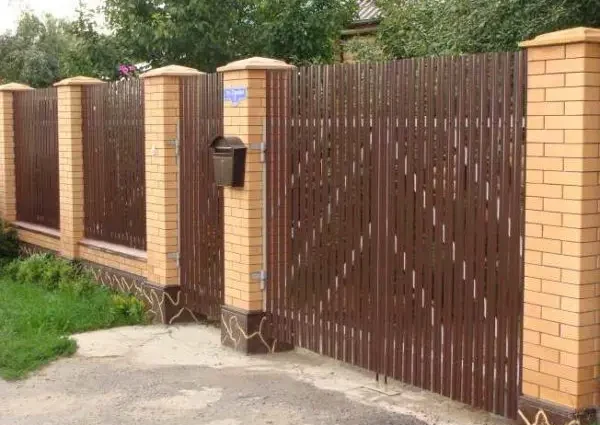Contents
Choosing a fence for a site is not an easy task – it is necessary that it be reliable, durable, beautiful. All these requirements are met by a fence made of a metal picket fence (Euro picket fence). Climbing on it is problematic – not that rigidity. Breaking it is “boring” – usually, lovers of mischief are limited to bending a couple of planks. Beauty, of course, is a subjective criterion, but such fences look better than the same solid corrugated fence. In addition, they are not so susceptible to wind loads, which saves on support poles. An additional plus is that they are breathable. In general, a good option.
What is a metal fence
The metal fence is made from galvanized steel sheet. A relief is formed on the sheet, after which it is cut into picket strips, covered with protective compounds, and painted. Get strips of a certain height. Usually the height is from 150 to 180 cm. To complete the fence, you also need support poles (most often 60 * 60 * 2 mm), bowstrings (two or three crossbars that go between the poles) and fasteners.
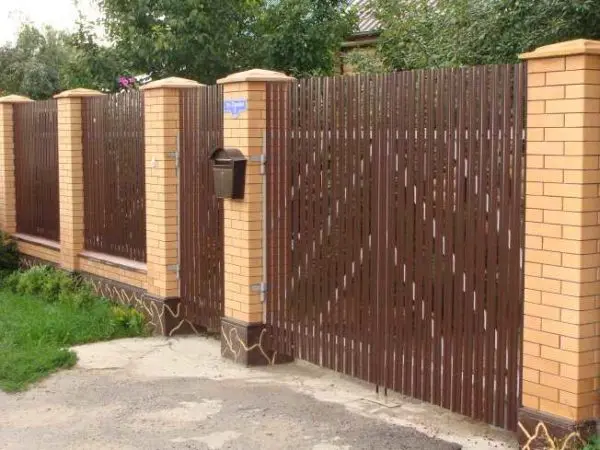
Types, shapes, profiles
The thickness of the metal of the European fence can be from 0,4 to 1,5 mm. The most common is made of steel with a thickness of 0,5 mm. Fence width – from 80 mm to 128 mm, length – up to 2 meters.
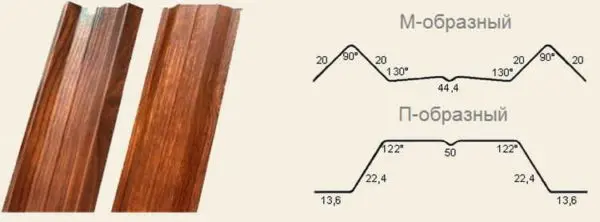
There is a metal fence with a different profile: P (rectangular), M-shaped and semicircular. M-shaped have more ribs, respectively, have greater rigidity. But there are also U-shaped ones, in which grooves are formed in the “back”. In this case, it is already difficult to say which of them will be tougher. Most likely, the latter, especially if it has rolled edges.
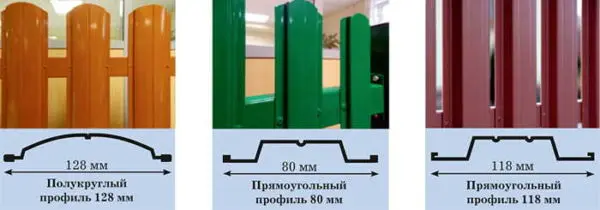
Semi-circular also have greater rigidity, but are more difficult to form and usually have a higher price. For greater strength, additional grooves can also be formed along the long side.
In general, the more grooves, stiffeners, the better the bar resists bending along the length. But with the complication of the relief, the price becomes higher. Since it is rather big in itself, you usually have to find a compromise. In any case, the bar must withstand your attempts to bend it.
What to look for when choosing
When you choose a metal picket fence, it is advisable to look at the party offered to you live. The same thickness of the metal can be declared, but in practice it turns out that the edge of the bar from one batch can be bent with a finger, with another batch such a trick fails. And this is from the same manufacturer. The point is the quality of the batch of metal, and it is rarely stable.
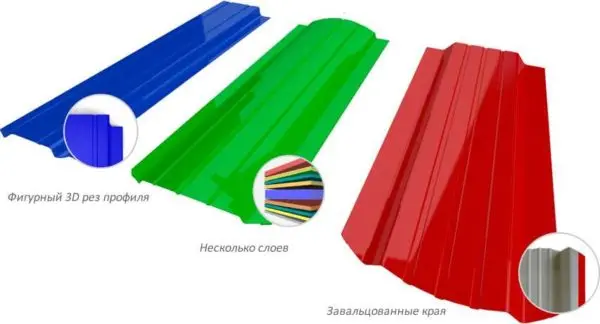
Also be sure to pay attention to the edges – it is better if they are rolled. Firstly, it is a more attractive appearance, secondly, the fence is more rigid, and thirdly, the sharp edge is bent and it is impossible to get hurt. There is only one drawback with a rolling fence – a higher price, since special equipment and additional processing time are required.
If we talk about the products of specific companies, then the Grand Line (Grand Line), Barrera Grande, Nova, TPK Metalroofing Center, FinFold, UNIX (Unix) are popular.
Painting methods
It is worth understanding the method of coloring. There is an iron picket fence with two-sided and one-sided painting. With one-sided, the back side is covered with a layer of primer without staining. Has, accordingly, gray color. Metal picket fence painted on one side, gray on the inside. It’s not so bad – it’s not conspicuous. If this option does not suit you, either buy with double-sided painting, or paint it yourself. The paint is taken “for roofs”, choosing the right shade. Note that the metal painted with a brush looks … not very good. If there is an airbrush, the appearance will be good, although not ideal.

It should also be noted that there are two types of coloring of a metal picket fence:
- polymer coating;
- powder paint.
The first method is much more reliable, since the application technology requires special equipment and strict adherence to technology. As a result, such a picket fence withstands increased mechanical stress. Even if there is a scratch in the coating (although you have to try), the metal does not rust, as there are still protective coatings that prevent rust.
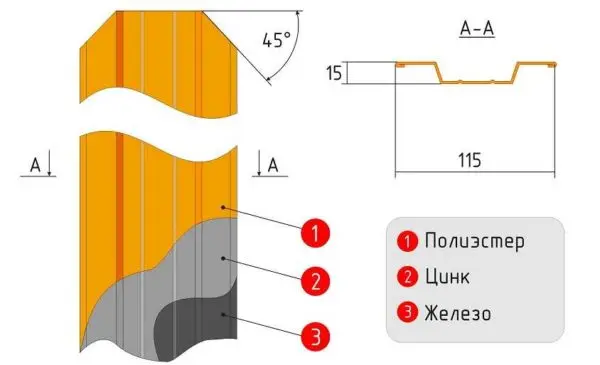
Powder coating, in theory, is no worse. But only if it was made according to the rules: a protective coating was applied to the primed metal, and powder paint was applied on top of it and baked in special chambers. But the bottom line is that you can apply paint in the “garage”, and somehow you can burn it there. The result will just be completely different. In addition, there are ready-made sheets of Chinese origin. In these, the paint is applied in the shop, but often directly onto an unprimed steel surface. Outwardly, it is impossible to determine all these nuances, and after the slightest scratch, rust appears. So the polymer coating is more “safe”.
What can be a metal picket fence
You may like metal fences or not, because there is no dispute about tastes. But in terms of practicality, they certainly outperform their wooden counterparts. Once installed, you do not remember the fence for years. It does not need to be painted to make it look decent, as good quality paint lasts for years without visible change. And this is one of the important factors that make you think about installing such a fence.
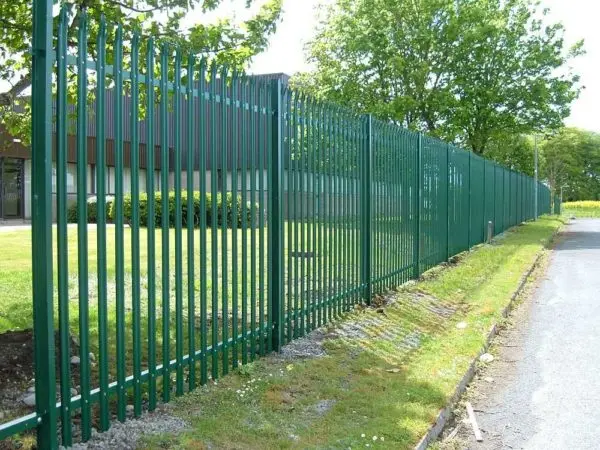
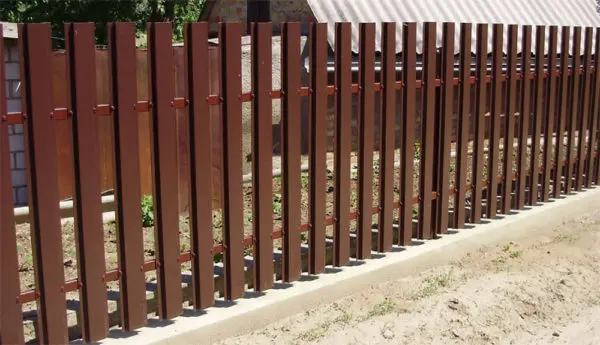
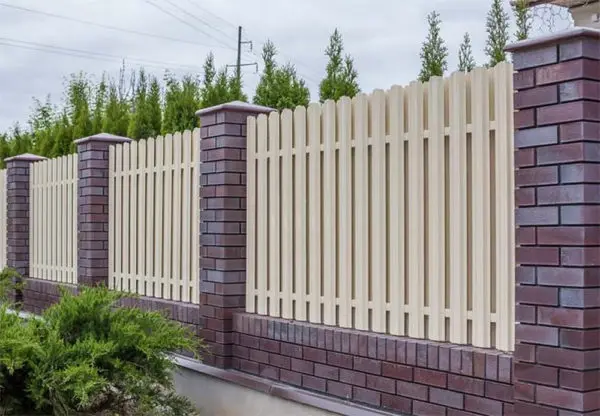
Mounting methods
There is a single-row and double-row (double-sided, checkerboard) method of mounting the metal picket fence strips. With a two-row, the slats are placed on both sides of the bowstring, and so that they overlap each other by at least a centimeter. Therefore, the distance between the planks should be slightly less than the width of the fence. With this installation, slats per linear meter of the fence will require 55-60% more. But the fence turns out to be practically invisible – only at a certain angle you can see a small part of the area. And this despite the fact that the fence will not be solid and all the “charms” of a solid fence will not touch you.
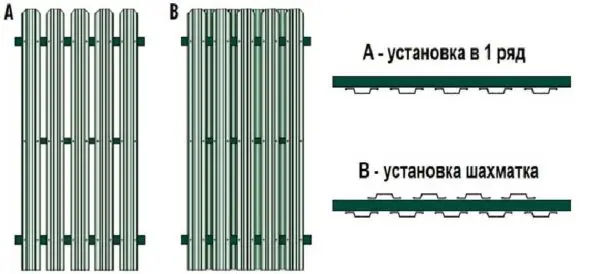
Most often, the strips are mounted vertically, but there is also a horizontal mounting method – it can also be single-row or double-row. The horizontal fence looks more “exotic”. With a two-row (two-sided) installation of the strips, it turns out to be generally opaque.
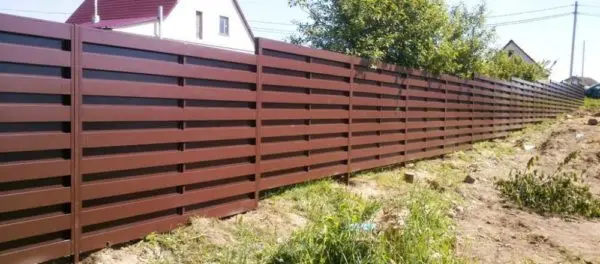
The disadvantage of this mounting method is that special poles and intermediate poles are needed to provide the required structural rigidity. Another caveat: planks are usually produced up to 180 cm long, longer ones will have to be ordered, and this costs extra money. So either you have to put up poles more often, or overpay for a non-standard size.
Dimensions and distances
When mounted in one row, the gaps between the strips may be different. The exact distance is chosen arbitrarily, depending on how “transparent” you want to make the fence. Most often, the distance between the pickets is 35-50% of the width of the plank. But this is not a rule, there are both smaller and larger gaps.
When mounting in a checkerboard pattern, if you do not want your yard to be visible at an angle, the planks should overlap 50% of the width of the picket fence or more. If “viewability” is not important, you can set them so that the edges overlap by only 1 cm.
The height of the fence is selected depending on the wishes of the owners. If you want the yard to be as closed from prying eyes as possible, the length of the bar should be from 180 cm. Given that they will be slightly raised above the ground, this is enough to prevent the vast majority of people from looking into your territory.
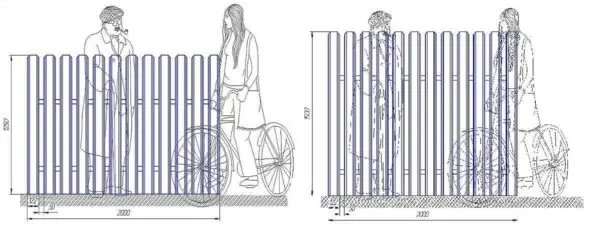
If you don’t care if something will be visible through the fence or not, you can take both 1250 mm and 1500 mm. In the first case, the fence will end somewhere at the chest level of passers-by, in the second – at eye level or slightly lower (see the figure for an approximate layout), and this is without a foundation.
The width of the span of a vertical fence made of a metal picket fence is 200-250 cm. It is at this distance that the pillars are dug in, then two or three crossbars are fixed between them. These crossbars are called “lags” or “bowstrings”. For a picket fence up to 150 cm high, two crossbars are enough, for higher ones, three are better.
Infill types
There are several more varieties of filling spans (distances between supporting pillars). The easiest way to install a direct way is when all the strips are the same length. On top of such a fence, you can put a U-shaped bar made of the same material (sold in the same place as the euro picket fence). In addition to the aesthetic load, it also covers the metal sections, which increases the service life of the fence.

All “waves” require trimming most of the planks to a certain distance. One “wave” per span is made in increments of 50 or 25 mm. With a step of 50 mm, the height difference between the shortest and longest planks is significant, but the fence looks more delicate. In the case of a “wave” with a pitch of 25 mm or with a “double wave”, the difference is smaller. The upper bars are put here much less often, but they can also be installed. Only at the point of fracture of the “wave” will you have to cut the sidewalls and bend.
Features and installation rules
When installing a metal picket fence in Central Russia, it is recommended to install poles from a profiled pipe 60 * 60 mm (60 * 40 can be used). For crossbars, it is more convenient to take the same profiled pipe, but with a section of 40 * 20 mm. In this case, the fence will definitely withstand wind and snow loads.
When installing, the installation step of the pillars is 2 meters. If there are two crossbars, then they are fixed so that there are 25-35 cm to the edge of the plank. With a fence height of 150 cm or more, the distance is 30-35 cm, with shorter ones – 25 cm. But, with a fence height above 1.5 m, it is better to do three logs, and not only in regions with strong winds. It’s just that with two lags, the distance between the fasteners is too large, which makes it easy to move the slats apart.
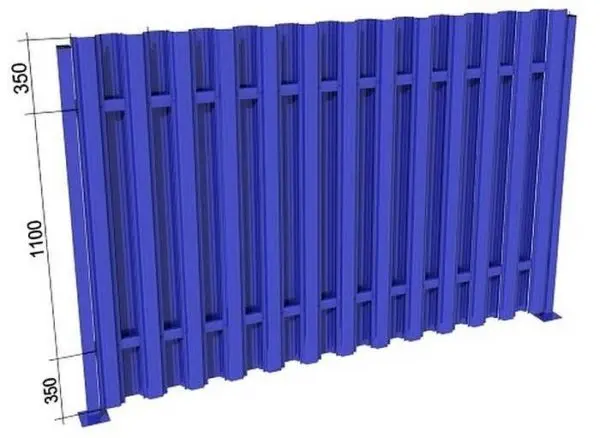
There are two ways to fasten the slats: with screws and with rivets. Self-tapping screws and rivets are installed along both edges of the bar on each of the crossbars. That is, if there are two crossbars, 4 self-tapping screws / rivets are needed for each bar, if there are three, then 6 fasteners are needed per picket. You can, of course, fix it on one self-tapping screw or rivet on the crossbar, setting it in the middle. But in this case, pushing the pickets with your hands is as easy as shelling pears – and you don’t need to climb over the fence.
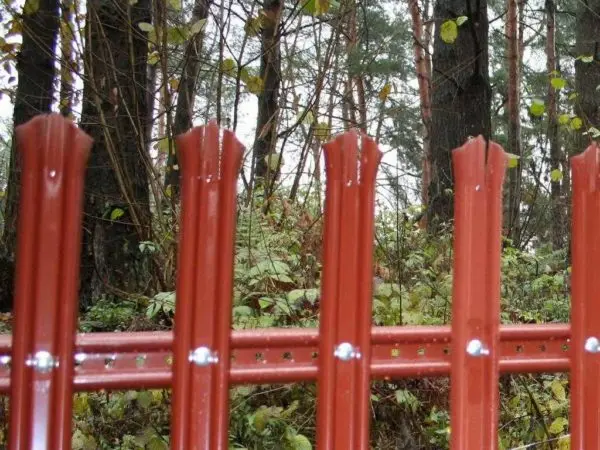
Какой из типов крепежа выбрать? Саморезы легко устанавливаются — в этом их плюс. Но они также легко откручиваются, что, при определенных обстоятельствах, может быть минусом. Заклепки требуют большего времени для установки, но и снять их гораздо сложнее. Что же выбрать? На лицевой части забора или если ограда надолго остается без присмотра (дачи сезонного посещения), однозначно стоит поставить заклепки. Конечно, если злоумышленники зададутся целью, то справятся и с заклепками, но сделать это будет сложнее. При монтаже ограды между соседями в домах постоянного проживания, вполне можно крепить металлический штакетник на саморезы.
How to Make Your Own Hands
As you probably noticed, the metal fence is produced using almost the same technology as the profiled sheet, but the sheet costs less. Therefore, many people have the idea to make a picket fence by spreading the profiled sheet into strips. In principle, this can be done if you are able to cut strictly along the line without any noticeable deviations. But for cutting it is necessary to use scissors for metal – perforated or manual. In no case should a grinder be cut, as it burns out the protective cover. So the work is not easy and it will take a lot of time. If that doesn’t scare you, you can try.

What is the disadvantage of a homemade picket fence from a profiled sheet? Everything is obvious: the edge is rarely even, since it is difficult to do it manually. In addition, the cut is unprotected and may begin to rust. You can, of course, smear the sections with a primer / paint, but in order for all layers to lay down normally, an absolutely clean surface is required. That is, the places of cuts must first be dedusted (not so difficult, but it takes time), then also degreased. Only in this case the protective coating will be of really high quality.
It is advisable to roll the edges – this will give the home-made picket fence greater rigidity, because additional reliefs are rarely formed on the profiled sheet. It “holds” its shape due to its size and the alternation of waves.










